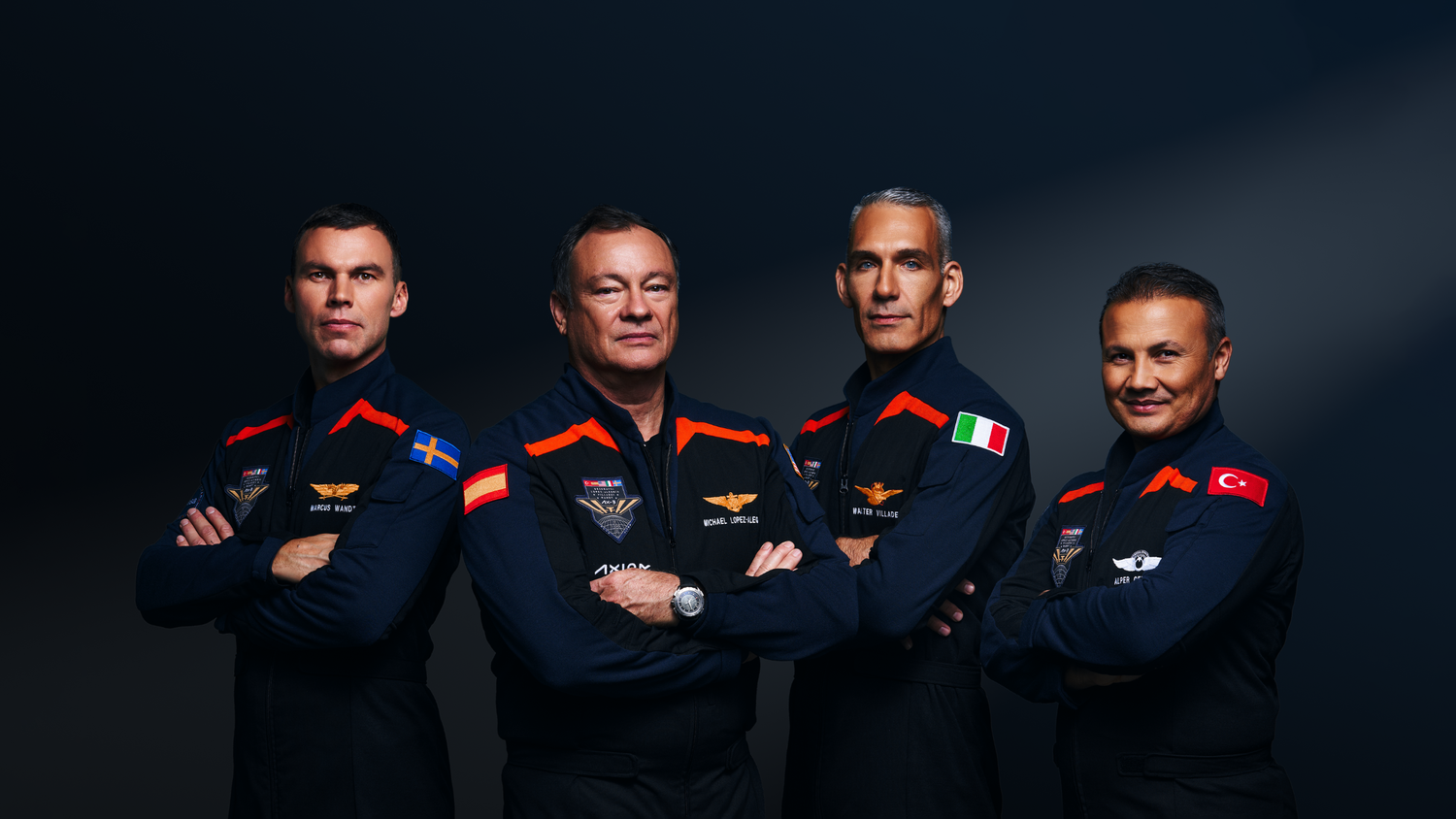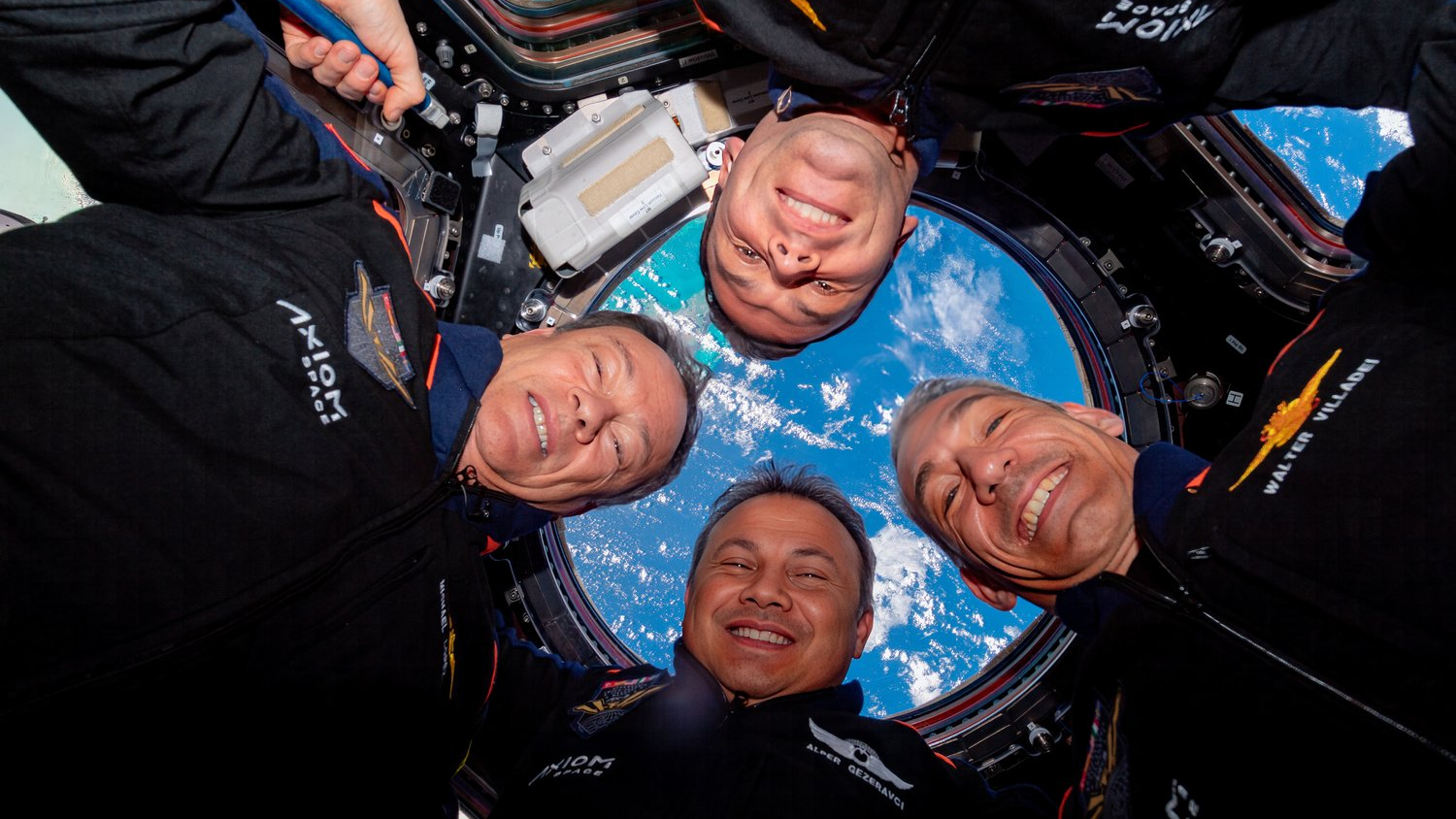SpaceX's longest-ever astronaut cruise was a smooth ride, Ax-3 crewmembers say
'It is truly unique and a real opportunity — once in a lifetime. Twice, sometimes.'

After spending more than three days inside a SpaceX Crew Dragon capsule during his most recent mission, a private astronaut says he'd gladly jump in again.
Four crewmembers spent a record 83 hours aboard SpaceX's Crew Dragon Freedom during the capsule's journey to and from the International Space Station (ISS) on Ax-3, a mission organized by Houston-based company Axiom Space that wrapped up on Feb. 9.
The quartet also completed 21 days in orbit overall, more than the previous two Axiom missions had managed. Commanding Ax-3 was Michael López-Alegría, who is the only person to fly on Dragon twice.
"We had a long time ... 36 hours, as we say, uphill. So the time from launch to docking. Then we had 47 hours from undocking to splashdown," López-Alegría told Space.com during an Ax-3 press conference on Tuesday (Feb. 27). He's a former NASA astronaut who's now Axiom Space's chief astronaut.
The time passed quickly, López-Alegría emphasized, as the crew tested their bodies in microgravity and, when possible, looked out the window. "Before you knew it, it was over, with the parachutes opening and splashdown. Wonderful experience."
Related: Meet the 4 astronauts of Axiom Space's Ax-3
López-Alegría, a six-time spaceflyer, joked about how lucky he was to be inside the SpaceX Dragon a second time. "I would encourage anybody who would love to have that experience to do so, because it is truly unique and a real opportunity — once in a lifetime. Twice, sometimes."
Breaking space news, the latest updates on rocket launches, skywatching events and more!
Flying with López-Alegría was Walter Villadei, a colonel in the Italian Air Force who also flew suborbitally with Virgin Galactic in June 2023; mission specialist Alper Gezeravcı, the first citizen of Turkey to reach space; and mission specialist Marcus Wandt, a European Space Agency reserve astronaut. Ax-3 also was SpaceX's first private all-European mission. (López-Alegría holds Spanish as well as U.S. citizenship.)
SpaceX officials said recently they appreciated the wealth of data that Ax-3's long stay aboard Dragon provided, as it allowed for lengthy evaluations of the environmental control, waste management and other systems on board.
"We got a good chance to see that the Dragon capsule design was really strong in terms of taking care of the crew, " SpaceX vice president William Gerstenmaier said during a livestreamed press conference on Sunday (Feb. 25) with NASA. (The topic of that briefing was the flight readiness review for the agency's next astronaut launch with SpaceX, called Crew-8, now set for March 1.)
"We're continuing to work with NASA to understand the best configuration" for astronaut missions, added Gerstenmaier, a former senior NASA official in human spaceflight himself. SpaceX also did not see any energy modulator problems, which it had noted on past missions with Dragon.
During Sunday's press conference, NASA commercial crew program manager Steve Stich said the long flight with Ax-3 astronauts inside "gives us confidence" if NASA "ever had to fly those kinds of durations" with SpaceX. The agency, Stich added, participated in the post-flight review of data, which he characterized as "very thorough."
Ax-3 finished more than 56 scientific experiments, with topics including physics and space medicine. López-Alegría highlighted an investigation involving wearable devices as one experiment that may benefit future short-duration missions like his, because such astronauts may not get as much exercise "as we would like" compared to the two or three hours per day that a typical half-year astronaut gets on the ISS.
"I think it's a wonderful tool to be able to assess objectively how your body's doing and what your routine is, how it's affecting it," he said. Given that wearables are easy to use, the crew found they could collect hours of data "and not even think about it."
Speaking of wearables, Villadei tested the Smart FlightSuit 2 for the second time in space (the first being during his Virgin excursion) to test for comfort, how well the sensors perform and how useful the suit is in microgravity.
Villadei, who is also a military pilot, said he could see use for that community with more development to make sure fabrics can withstand tough environments. Some variants may also be used for exercise, he added, as a T-shirt he tested can be used "without washing out."
Astronauts don't have access to washing machines in orbit, and reducing water use overall is helpful for environmental reasons on Earth, he added. "If you think about the impact in terms of sustainability, even on the ground, some of these technologies can really have much wider applications."

Elizabeth Howell (she/her), Ph.D., was a staff writer in the spaceflight channel between 2022 and 2024 specializing in Canadian space news. She was contributing writer for Space.com for 10 years from 2012 to 2024. Elizabeth's reporting includes multiple exclusives with the White House, leading world coverage about a lost-and-found space tomato on the International Space Station, witnessing five human spaceflight launches on two continents, flying parabolic, working inside a spacesuit, and participating in a simulated Mars mission. Her latest book, "Why Am I Taller?" (ECW Press, 2022) is co-written with astronaut Dave Williams.


